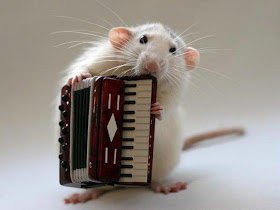So the first day of this series I wrote about the why of pronation. Yesterday I wrote about how strengthening the feet can help with your pronation. Today, I'm going to cover the wedging inside the boot.
In summary, what I'm aiming for is to gently rotate my feet to their outside edge, so that gravity pulls directly through the blade into the center of the foot, When I'm skating on one leg, I want to get a straight line from my hip to my knee, to my ankle, to my foot, to the blade, to the ice. If there are any angles in there, say at the ankle, I can to use my toes to rotate my foot to the outside. To prevent foot fatigue and pain I use a wedge in the boot to do most of the work.
I started out with custom walking orthotics prescribed for me by an elderly orthopedic surgeon specializing in feet. (He was a consultant to the LA Rams, so yes, this was a loooong time ago.) These orthotics had to be in flat shoes so they wouldn't work in skates. My experience with the custom orthotics built for my skates last year, was that all the measurements etc. were taken as if they were for flat shoes. These expensive skating custom orthotics were a total waste of money. I tore them apart and used the sturdy plastic insole to support my own adjustments. That worked great. Then one of the orthotics disappeared when it fell out of my boot someplace. I then ended with the solution I'm about to describe.
 | | | | |
| Hey, it made me laugh |
|
|
So, here's all the stuff I use.
1. Superfeet Skating insoles--I didn't think they'd be sturdy enough, but they are
2. A collection of neoprene and gel pads from the feet section of the drug store. I cut these up for padding and stuffing under the Superfeet insoles. I like the gel pads, but some places they're too thick so I use the neoprene instead.
3. Thick felt chair tips from the hardware store (don't get the thin green ones used for lamps). These are put on the legs of tables and chairs to keep them from scratching wood floors. The best ones are the ones with a sticky back so you don't have to use glue.
4. An admonition--feet are different. What works in one boot, may not work in the other. Fit your boots separately.
Start with boots that fit you for length and width. This isn't a substitute for a good fit.
Step 1: I fit the forefoot of my boot so that my toes are comfortable, but so they don't have so much room they can flop around in the toe of the boot.This will mean I may need to put a pieces of a flat neoprene insole (and/or gel pads) under the Superfeet Skating insole. I get the forefoot in the boot to fit so that when I curl my toes a just little, the top of the boot restrains them. I don't want to be able to curl them so much that they don't bump into the leather of the boot. And yes, I've had a boot fit that way. Anyway, use the gel pads if you need a big change, and the neoprense pads if you need to make a small change. You can also use heel pads too, and just cut them to fit.
My experience has been I can't put a wedge in the forefoot that will do any good. I do all my wedging in the heel and it works well for me. I call it 'wedging' but you're not putting in a wedge. You're making the insole angle as if there is a wedge underneath it. This is why you need a good sturdy insole, and not a soft one.
Step 2: Putting in the wedges. Take the felt chair tips and peel off the paper backing. I then start by putting one felt tip at the outside (EDIT) inside edge of the underside of the heel of the superfeet insole. It's best to do this at the rink, because after I put the insoles back in the skates I'll want to go skate. If one chair tip doesn't work I try putting a second on top of it to angle the insole even more. You can fiddle around all you want with this approach. Stack chair tips, put them side by side, whatever. It's up to you to find out what makes you skate better. When I test the boots, I do the wedging simultaneously. So it's not fix one boot then then other. It's fix both, experiment, fix, experiment.....
In the end the boots may not need identical adjustment. I skate with one boot without wedging, one with.
That's pretty much all there is to it. Because I have an idea of what causes my pronation, I'm able to make adjustments in the boot. If you try this and it works for you, you've saved a lot of money. If it doesn't work for you, you're out at most $50-60, of which $40 is for the Superfeet. If it doesn't work for you then you can always try out of the boot adjustments; moving the blade and shimming the blade. That's something you'll need to take up with your fitter.





















